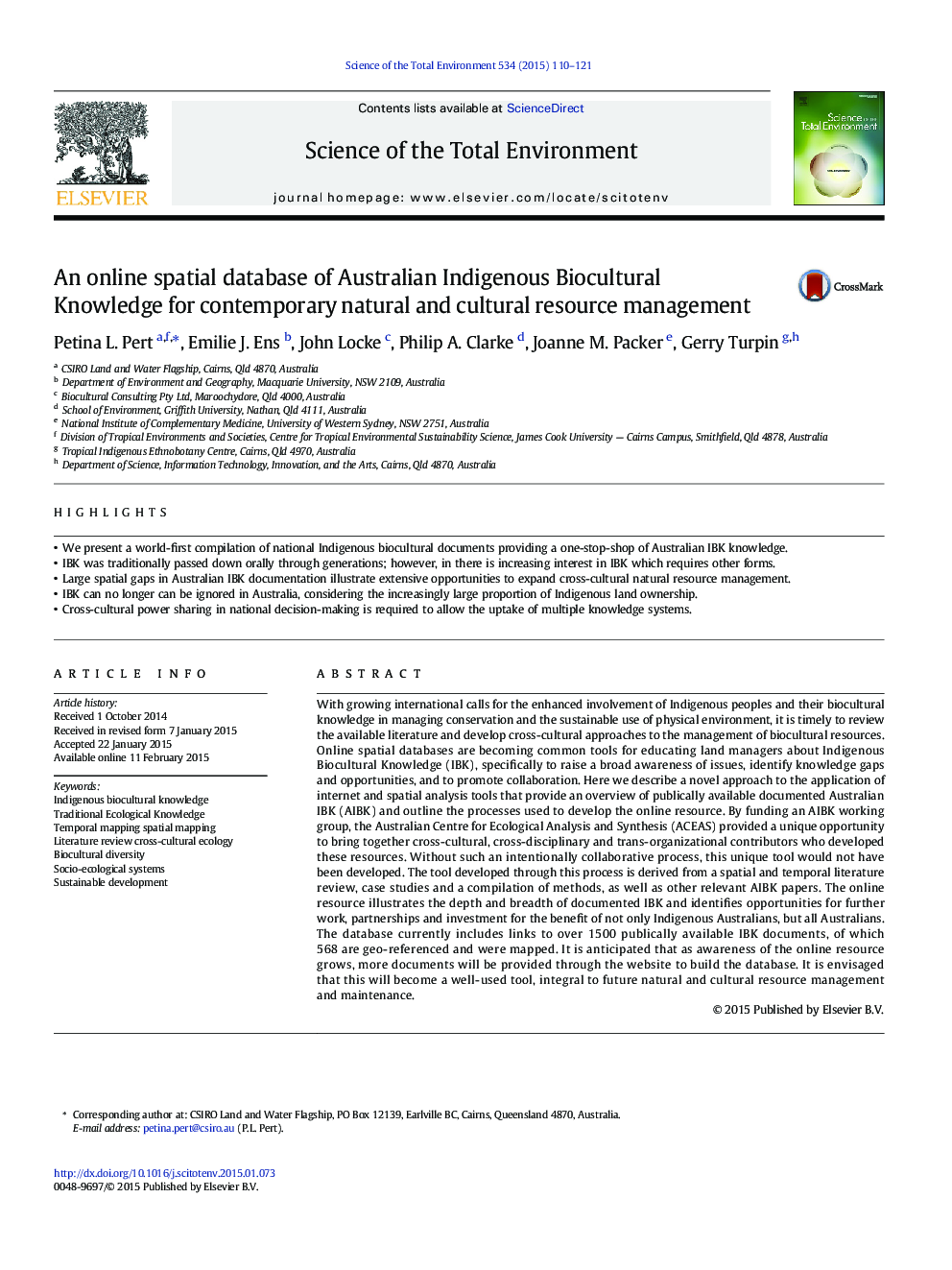| Article ID | Journal | Published Year | Pages | File Type |
|---|---|---|---|---|
| 4428339 | Science of The Total Environment | 2015 | 12 Pages |
•We present a world-first compilation of national Indigenous biocultural documents providing a one-stop-shop of Australian IBK knowledge.•IBK was traditionally passed down orally through generations; however, in there is increasing interest in IBK which requires other forms.•Large spatial gaps in Australian IBK documentation illustrate extensive opportunities to expand cross-cultural natural resource management.•IBK can no longer can be ignored in Australia, considering the increasingly large proportion of Indigenous land ownership.•Cross-cultural power sharing in national decision-making is required to allow the uptake of multiple knowledge systems.
With growing international calls for the enhanced involvement of Indigenous peoples and their biocultural knowledge in managing conservation and the sustainable use of physical environment, it is timely to review the available literature and develop cross-cultural approaches to the management of biocultural resources. Online spatial databases are becoming common tools for educating land managers about Indigenous Biocultural Knowledge (IBK), specifically to raise a broad awareness of issues, identify knowledge gaps and opportunities, and to promote collaboration. Here we describe a novel approach to the application of internet and spatial analysis tools that provide an overview of publically available documented Australian IBK (AIBK) and outline the processes used to develop the online resource. By funding an AIBK working group, the Australian Centre for Ecological Analysis and Synthesis (ACEAS) provided a unique opportunity to bring together cross-cultural, cross-disciplinary and trans-organizational contributors who developed these resources. Without such an intentionally collaborative process, this unique tool would not have been developed. The tool developed through this process is derived from a spatial and temporal literature review, case studies and a compilation of methods, as well as other relevant AIBK papers. The online resource illustrates the depth and breadth of documented IBK and identifies opportunities for further work, partnerships and investment for the benefit of not only Indigenous Australians, but all Australians. The database currently includes links to over 1500 publically available IBK documents, of which 568 are geo-referenced and were mapped. It is anticipated that as awareness of the online resource grows, more documents will be provided through the website to build the database. It is envisaged that this will become a well-used tool, integral to future natural and cultural resource management and maintenance.
